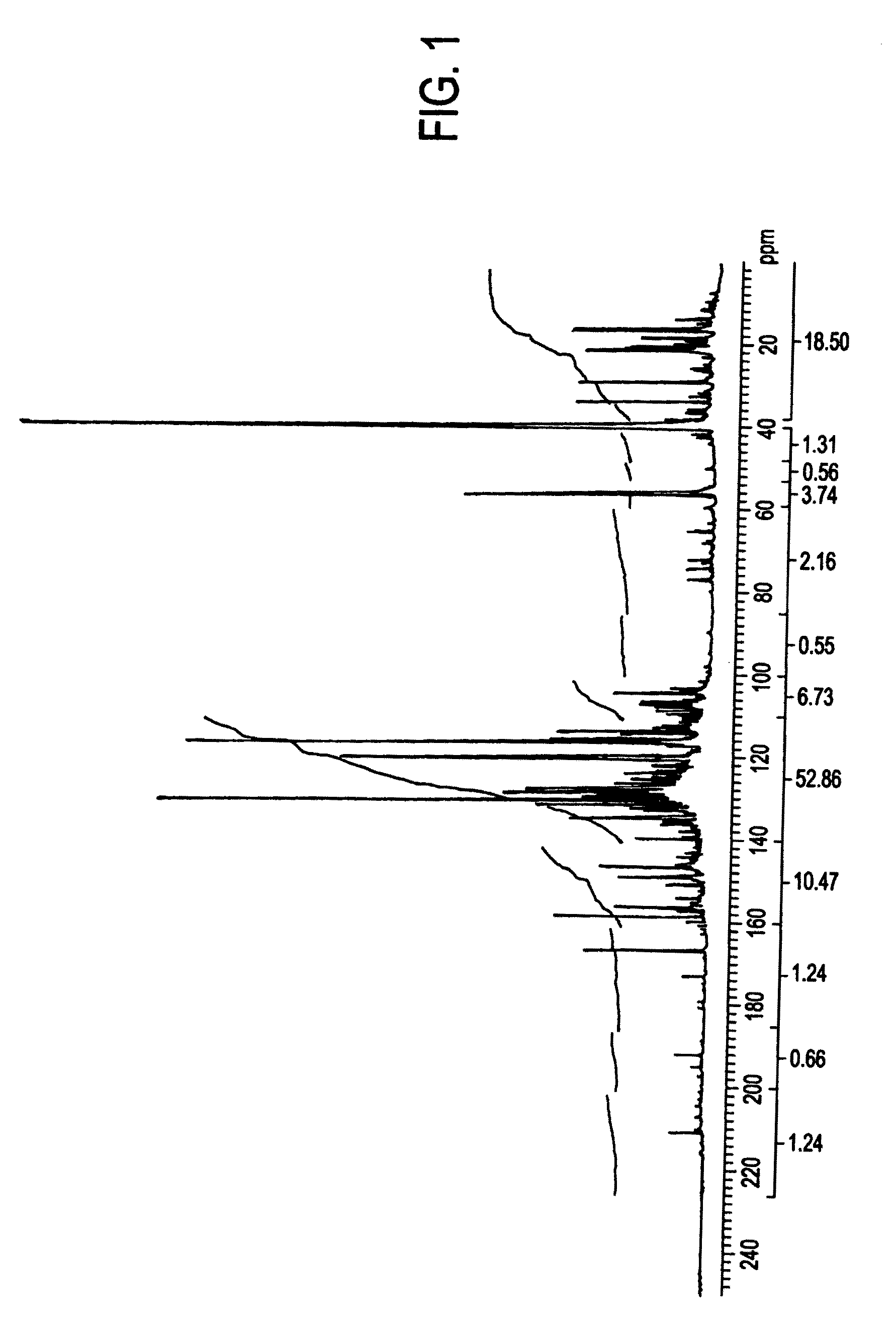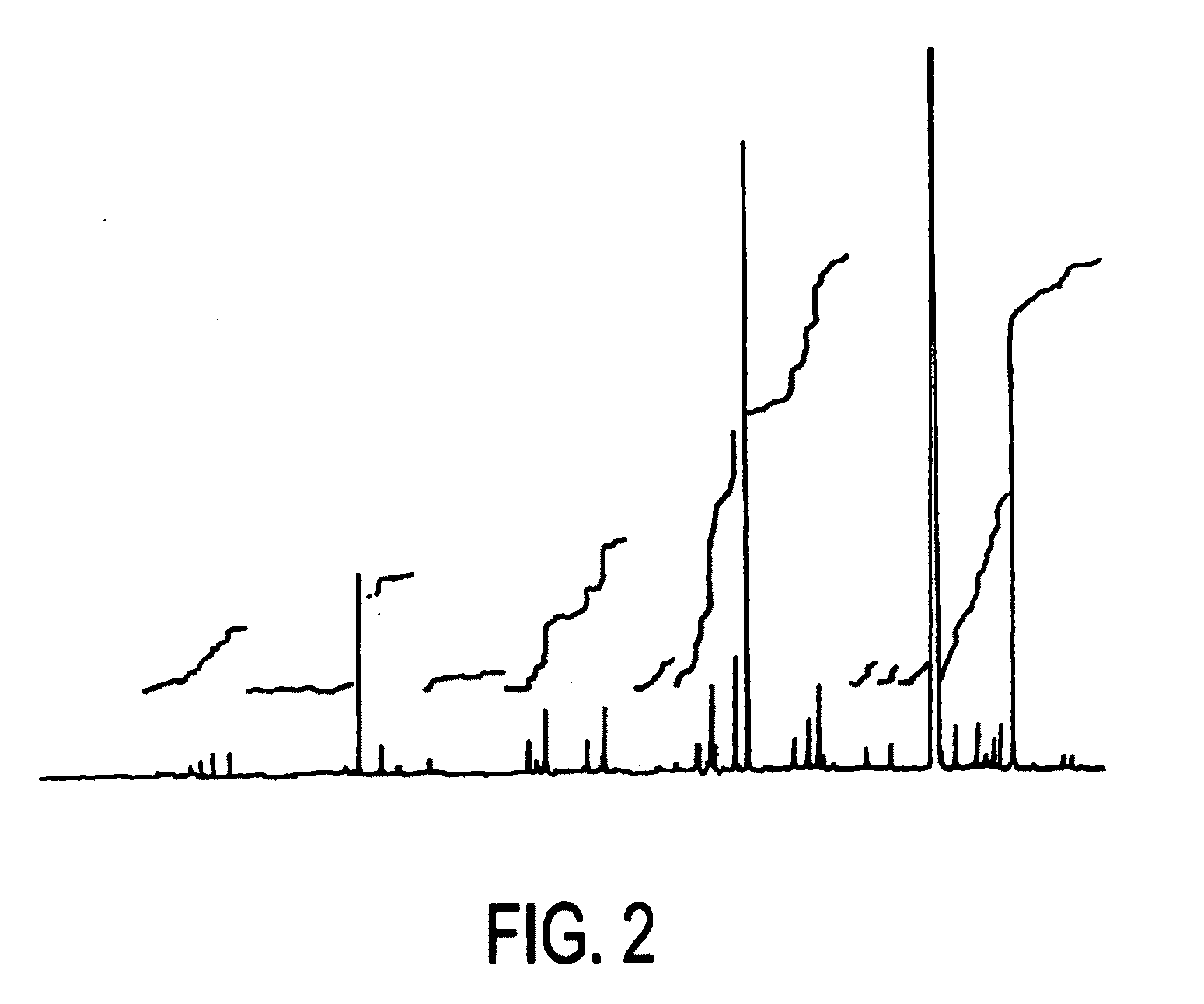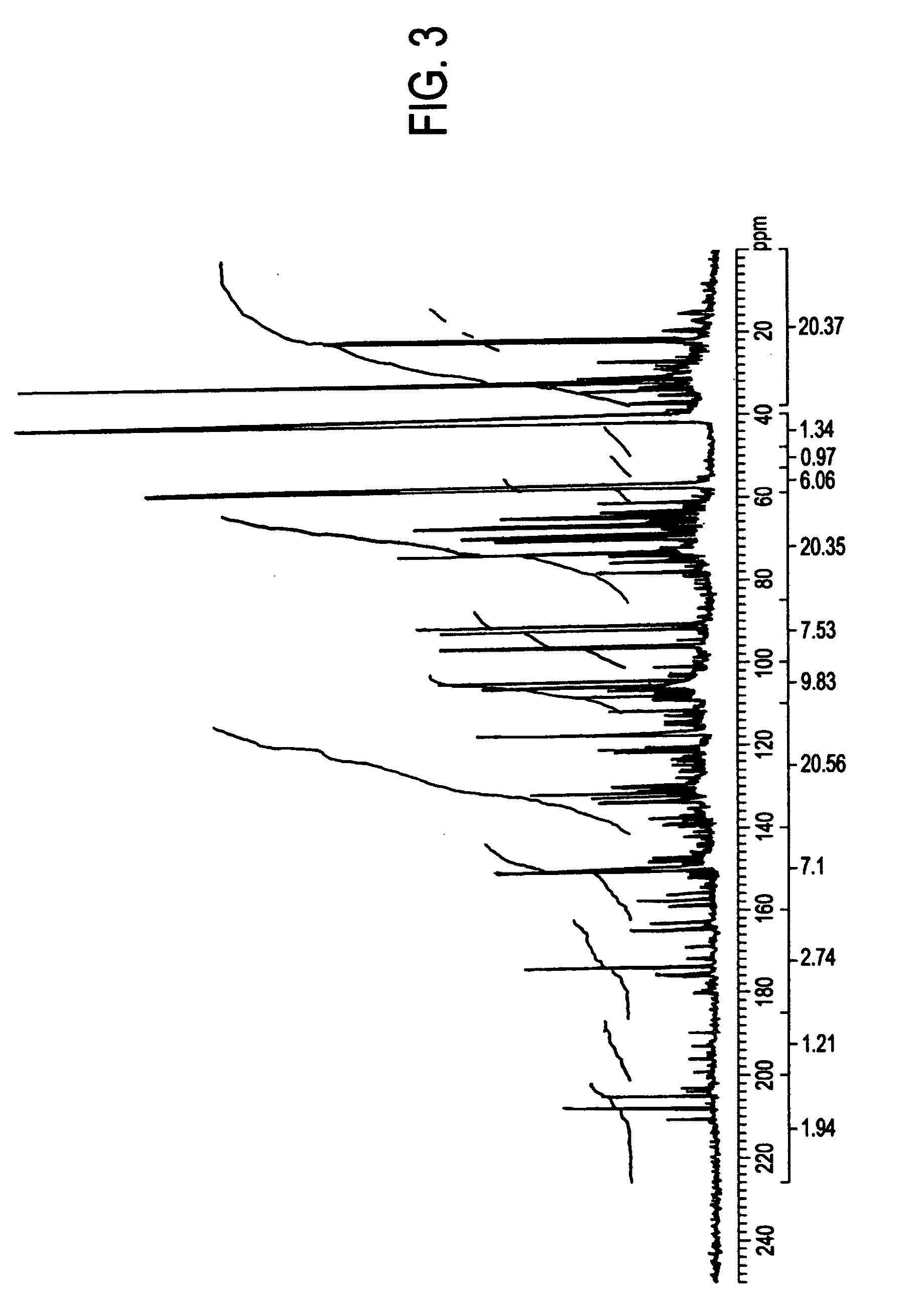Production of stable biomass pyrolysis oils using fractional catalytic pyrolysis
a technology of biomass pyrolysis and fractional catalysis, which is applied in the direction of physical/chemical process catalysts, combustible gas production, combustible gas purification/modification, etc., can solve the problems of poor stability of biocrude oil, high moisture content, and general instability of liquid product (bio-oil or biocrude) , to achieve the effect of eliminating the need for further processing steps and improving stability
- Summary
- Abstract
- Description
- Claims
- Application Information
AI Technical Summary
Benefits of technology
Problems solved by technology
Method used
Image
Examples
example 1
Preparation of Feedstocks and Catalyst
[0039]The feedstock used for this experiment was a hybrid poplar whole wood ground in a Wiley mill (model 4) to pass a 1-mm screen. The moisture content of the feed was 5%. A proprietary catalyst (VPISU-001-H-ZMS-5 zeolite from Exxon Mobil of Irving, Tex., which was modified to suit the pyrolysis conditions) was used for the runs. Two hundred gram batches of this catalyst were used for the fluidized bed pyrolysis experiments.
[0040]The reactor consisted of a 50 mm (2-in) schedule 40 stainless steel pipe, 500 mm (20 in.) high (including a 140-mm (5.5 in.) preheater zone below the gas distribution plate) and equipped with a 100-μm porous metal gas distributor. The fluidizing medium was the above proprietary catalyst, and the bed was fluidized with nitrogen. The reactor was externally heated with a three zone electric furnace. The reactor tube contained a bubbling fluid bed with back mixing of the feed and catalyst.
[0041]The b...
example 2
Materials
[0076]Logs of hybrid poplar wood were first disc ground to a course fraction, air-dried at ambient laboratory temperature to equilibrium moisture content and then knife milled (Wiley mill model 4) until all the particles passed through a 1-mm mesh screen. The moisture contents of the materials were determined using infra-red moisture analyzer. Granular HZSM5 supplied by BASF Inc (BASF Inc, Florham Park, N.J.) was used for the pyrolysis studies.
[0077]The ground biomass material (4200 g) was loaded into a K-Tron gravimetric feeder hopper and fed into a 2 kg / h bubbling fluidized bed pyrolysis reactor containing the catalyst as the fluidizing medium. The fractional catalytic pyrolysis was conducted at a temperature of 450-500° C. using ZSM5 catalyst. The 10 cm bubbling fluidized bed reactor was charged with 1 kg of catalyst. The bed was initially fluidized with 2 SCFM of nitrogen but was replaced gradually with the producer gas from the catalytic pyrolysis u...
PUM
| Property | Measurement | Unit |
|---|---|---|
| temperature | aaaaa | aaaaa |
| temperature | aaaaa | aaaaa |
| temperature | aaaaa | aaaaa |
Abstract
Description
Claims
Application Information
 Login to View More
Login to View More - R&D
- Intellectual Property
- Life Sciences
- Materials
- Tech Scout
- Unparalleled Data Quality
- Higher Quality Content
- 60% Fewer Hallucinations
Browse by: Latest US Patents, China's latest patents, Technical Efficacy Thesaurus, Application Domain, Technology Topic, Popular Technical Reports.
© 2025 PatSnap. All rights reserved.Legal|Privacy policy|Modern Slavery Act Transparency Statement|Sitemap|About US| Contact US: help@patsnap.com



